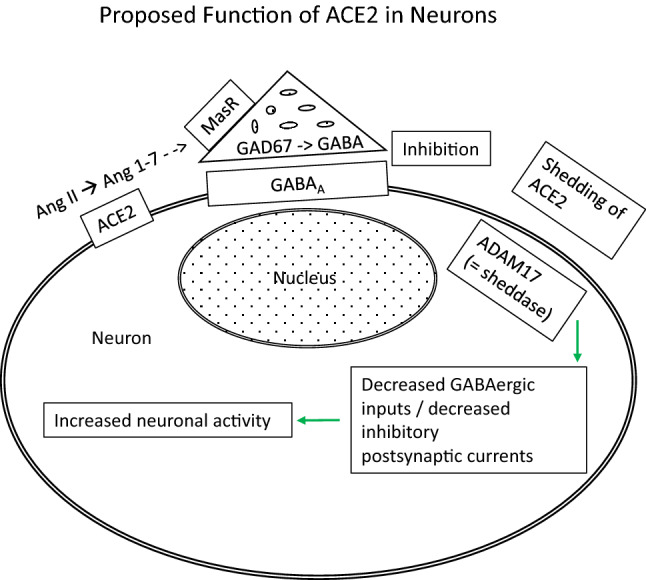Fig. 1.

Proposed general functions of ACE2 in neurons. ACE2 catalyses the breakdown of Ang II to Ang (1–7). The latter is an agonist of the Mas receptor (MasR), which has been colocalised with GABAergic neurons (in the amygdala) (Wang et al., 2016). Ang (1–7) causes inhibition of principal neurons by promoting GABAergic transmission in a MasR-dependent manner (Wang et al., 2016). This could occur via facilitation of GABA release through a nitric oxide-mediated pathway (Stragier et al., 2005) and possibly supplemented by an increase in GABA production via upregulation of glutamate decarboxylase 67 (GAD67) expression (studied in the pancreas) (Ma et al., 2020). GABA binds to GABAA receptors to produce inhibition of the postsynaptic neuron. ACE2 is shed from the cell membrane, resulting in loss of activity through the action of another enzyme, ADAM17 (Xia et al., 2013). The latter is mostly expressed in glutamatergic projection neurons (Xu et al., 2019). In this manner, ACE2 and ADAM17 exert opposite effects on neuronal excitability (studied in presympathetic projection neurons of the paraventricular hypothalamic nucleus) (Mukerjee et al., 2019). It is possible that the above schema could also apply to neurons in other parts of the brain including those in the cerebral cortex and hippocampus, which express lower levels of ACE2 (Doobay et al., 2007)
